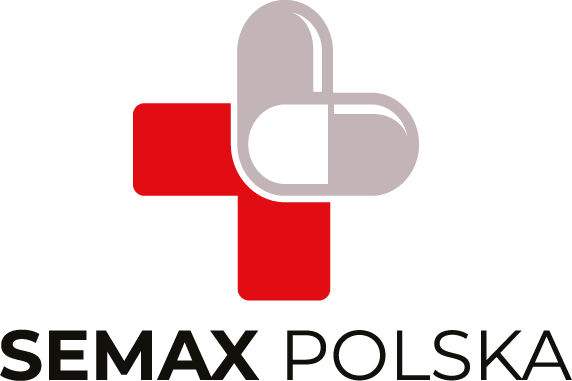Home 1
Tested in a Polish certified laboratory.
A proprietary method of peptide production.
Robust and aesthetically pleasing packaging.
Scientific information on each substance.
We choose only substances with maximum potential.
Free delivery within Poland from £200 when paying in advance.
Same day dispatch for orders placed by 11am.
We send parcels all over the world.
100% secure payment methods. Blik and fast transfer (paynow) card, GPay, ApplePay (Revolut) and others.
Carefully selected products.
Consultation with an expert.
You have 14 days to return the goods.
Our products
The best chemical reagents on the market.
We offer educational materials on health topics and chemical reagents for laboratory use.

Feedback from our customers
Frequently asked questions
Most peptides have a systemic effect e.g. bpc 157, this means that once they enter the bloodstream they spread throughout the body and have a specific effect on the body. Some neuropeptides peptides such as Semax or Selank, in addition to entering the bloodstream, must reach the brain to develop their full potential. This means that they have to pass the blood brain barrier.
Yes, the route of administration affects how much peptide enters the bloodstream, and this has a direct impact on efficacy. The route of administration also affects how much of the peptide will go directly to the brain.
Peptides are administered by injection, nasal spray, orally and sometimes in the form of skin creams.
In most cases, the injectable form is the most effective if we are concerned about affecting the whole body. Administering the peptide in this way allows the entire dose to enter the bloodstream, but studies show that neuropeptides such as Semax or Selank, whose main targets are to reach the brain, are better administered intranasally than by injection because they have the same efficacy. The injectable form is effective, but some people who do not like injections find it cumbersome. If the peptide is of suitable quality and the injection is done skilfully it is also a safe method of administration.
Peptides such as Semax and Selank are specifically designed to be administered through the nose. Studies show that they show the same efficacy as injections, so there is no need to prick yourself. Intranasal administration of peptides helps the peptides to more easily bypass the blood brain barrier and reach the brain more quickly, where they should begin their action. Efficacy with intranasal administration depends on whether the peptides manage to pass through the walls of the nasal mucosa into the bloodstream. The main factor influencing this is the molecular weight of the peptide, the smaller the easier it is for the molecule to be absorbed. The Semax peptide has a molecular weight of 751 Da. The molecule is small enough to be absorbed by the body. Studies on Semax administered intranasally have shown that it has a positive effect on both the brain but also on the treatment of gastric ulcers, proving that this peptide administered intranasally also has a systemic effect. Below are the molecular weights of the individual peptides: GHK-Cu (Glycyl-Histidyl-Lysine-Copper): The molecular weight is approximately 441 daltons. BPC 157 (Body Protection Compound 157): Molecular weight is approximately 1419 daltons. Epitalone (Ala-Glu-Asp-Gly): Molecular weight is approximately 390 daltons. KPV (Lys-Pro-Val): Molecular weight is approximately 328 daltons. Selank (Thr-Lys-Pro-Arg-Pro-Gly-Pro): The molecular weight is approximately 751 daltons It can be noted that the molecular weight of these peptides is lower than Semax, i.e. allowing for intranasal absorption. The mass of Bpc 157 is greater making the peptide slightly less absorbed, but rest assured there are ways around this, which will be discussed below. Another factor in whether a peptide will be absorbed into the bloodstream via the nose is its stability in the nasal cavity. Peptides especially those with a higher molecular weight have difficulty absorbing and take longer to do so. While in the nasal cavity, they are exposed to enzymes that degrade them. Peptides such as Semax or Selank are absorbed quickly enough that they will not be damaged before absorption, which research shows. Higher mass peptides like bpc 157 absorb more slowly, so it is worth choosing a more stable form of salt for intranasal administration in this case, such as Arg salt. This allows the peptide to stay in the nasal cavity for a long time without damaging it. In addition, so-called enhancers, i.e. substances that facilitate the penetration of other substances through the skin, can be used. Among the most effective is DMSO. DMSO temporarily unseals the structure of the skin or mucous membrane and allows substances to enter the body that would not normally be absorbed. This means that, for example, the arg salt peptide Bpc 157 dissolved in saline with 3% DMSO can remain in the nasal cavity for a long time without degrading and can be easily absorbed into the bloodstream. The efficacy of this solution can be tested for oneself. When administered in this way, the peptide will start to act on GABA receptors within minutes, inducing a feeling of relaxation. This is proof that the peptide has been absorbed and is working. The advantages of the peptide nasal spray are the ease of use and the low price of the product.
The main factor affecting the efficacy of this form of administration is the stability of the peptide in gastric juices. E.g. the standard form of bpc 157 peptide, i.e. bpc 157 acetate, will be rapidly degraded and not absorbed. In order for oral administration to be effective, the peptide must be protected appropriately. This can be done by changing the type of salt to, for example, arg salt. This will allow the Bpc 157 peptide to be stable in the stomach at ph above 3. At ph below 3, however, it will be degraded. Special protective capsules can also be used, which will only release the peptide in the intestine. With these changes, this form of administration will be effective. The downside of this solution is the price of the product; such a peptide will be up to five times more expensive than in intranasal form, and intranasal administration using absorption enhancers and a suitably stable salt is so effective that it will be more cost-effective to purchase bpc 157 spray.
Peptides in the form of a cream will not act systemically but locally. That is, you can, for example, buy a kpv peptide and spray or spread it on sensitised skin. This will help to relieve inflammation and regenerate the skin faster.
If the peptide is the same e.g. bpc 157 just in a different form it means that it has the same aminogram, i.e. it has the same effect. A different compound of the same peptide affects its stability. E.g. bpc 157 acetete, i.e. in acetate form will be stable enough to stay in powder form at room temperature, but once dissolved it should be stored in the fridge to avoid degradation. Such a peptide will be stable enough to be used for injection, but for oral use it is no longer suitable. Bpc 157 in arg salt will also be stable at room temperature when dissolved in water. It shows stability in gastric juices above ph 3. When administering peptides, it is important to select the right compound for the mode of administration so that the peptide is stable.
The volume of the peptide depends on the freeze-drying process. E.g. 60 mg of peptide can take up a lot or a little space. This is irrelevant when it comes to the effectiveness of the peptide.















